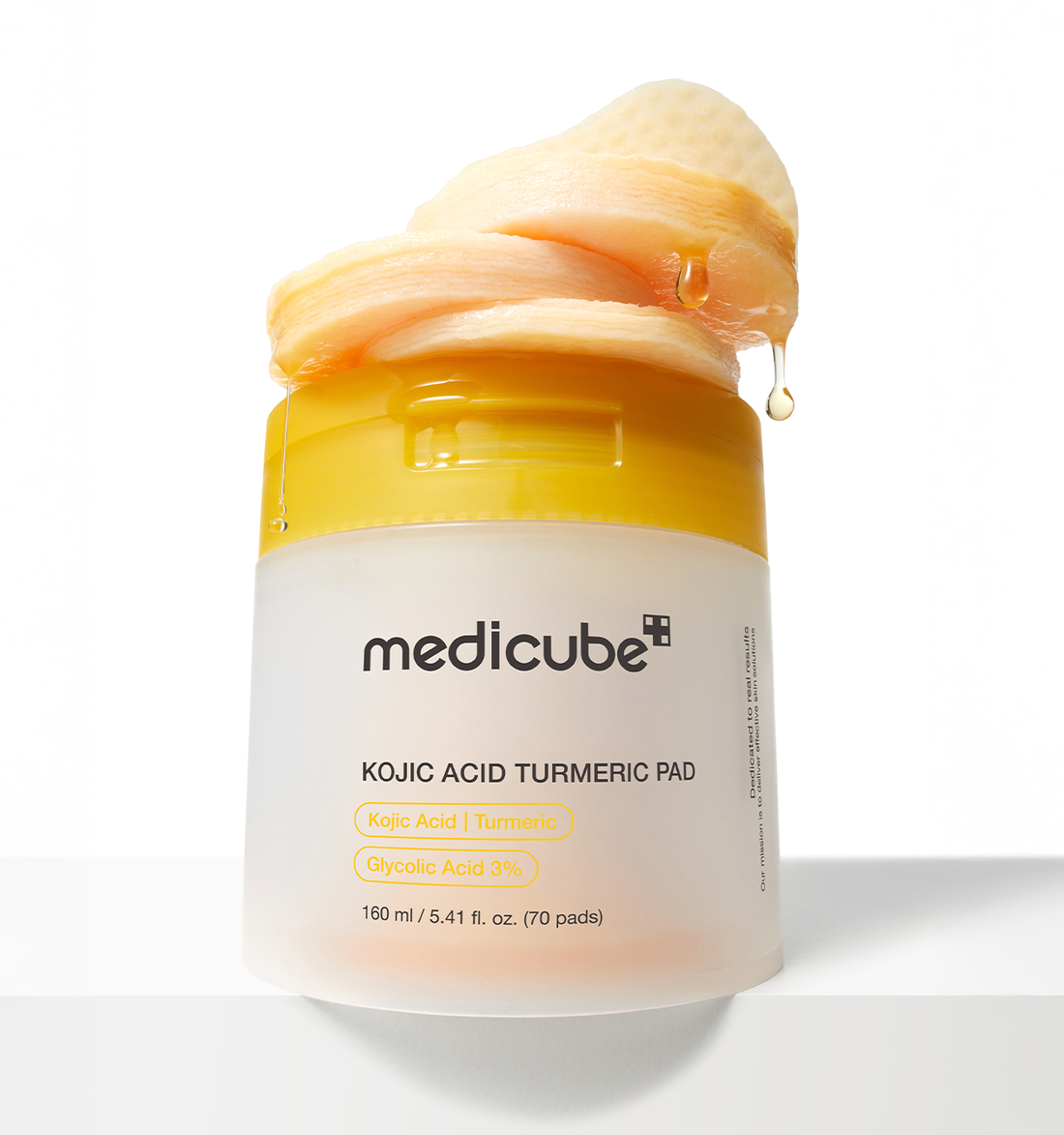
Kojic Acid and Skincare: The Ultimate Guide to Brighter, Even-Toned Skin
Share
In the world of skincare, kojic acid has emerged as a shining star for anyone seeking a brighter, more even complexion. Renowned for its skin-lightening and brightening capabilities, kojic acid offers an effective solution to common pigmentation problems such as dark spots, melasma, and sun damage. But what exactly is kojic acid, how does it work, and how should it be used safely to maximize its benefits? In this comprehensive guide, we dive deep into everything you need to know about kojic acid, empowering you to make informed choices for your skincare routine.
What Is Kojic Acid? A Scientific Overview
Kojic acid is a natural compound derived primarily from certain fungi, including Aspergillus oryzae, which is used in traditional fermentation processes like sake brewing in Japan. Chemically, kojic acid belongs to the class of organic acids, and its unique structure enables it to inhibit the production of melanin — the pigment responsible for giving skin its color.
Melanin is a vital protector against UV radiation, but its overproduction can lead to pigmentation issues such as dark spots, freckles, and uneven skin tone. Kojic acid acts by targeting and blocking the enzyme tyrosinase, which catalyzes the production of melanin. This selective inhibition means kojic acid helps prevent excessive pigmentation without disrupting the skin’s natural functions.
Unlike harsher synthetic agents like hydroquinone, kojic acid is considered a gentler alternative, making it suitable for those looking for a natural yet effective brightening ingredient.
How Kojic Acid Works in Skincare
Understanding the science behind kojic acid’s effectiveness sheds light on why it is a favored ingredient in many skincare formulations. The enzyme tyrosinase plays a central role in melanogenesis — the process through which melanin is synthesized in skin cells. Kojic acid’s molecular structure enables it to bind to copper ions in tyrosinase, effectively inhibiting the enzyme's activity.
With tyrosinase inhibited, melanin production slows down, resulting in the gradual lightening of existing pigmentation and prevention of new dark spots. This mechanism not only brightens the skin but also evens out tone, giving the complexion a more radiant and youthful appearance.
Additionally, kojic acid exhibits mild antioxidant properties. It helps neutralize free radicals—unstable molecules that can accelerate skin aging—thereby protecting skin cells and contributing to overall skin health.
The Benefits of Kojic Acid for Skin
The multifaceted benefits of kojic acid extend beyond simple brightening. Here are some of the key advantages that make kojic acid a powerful ally in your skincare journey:
1. Brightens and Evens Skin Tone
By reducing excess melanin, kojic acid helps diminish the appearance of dark spots, age spots, and pigmentation caused by sun damage or hormonal changes. With continued use, skin tone becomes more uniform and luminous.
2. Effectively Treats Hyperpigmentation and Melasma
Hyperpigmentation, including melasma—characterized by brown or gray patches on the face—responds well to kojic acid treatment. Many users experience visible fading of these stubborn discolorations, making kojic acid a preferred option among dermatologists for managing pigmentation disorders.
3. Supports Anti-Aging
While primarily known for brightening, kojic acid’s antioxidant activity helps combat oxidative stress, which contributes to premature aging. This can lead to fewer fine lines and a smoother skin texture over time.
4. Gentle and Natural
Derived from natural fermentation processes, kojic acid is generally well tolerated, even by sensitive skin types. It offers a safer alternative to more aggressive lightening agents, reducing the risk of irritation when used properly.
5. Lightweight and Easily Absorbed
Formulations containing kojic acid, such as serums and creams, are typically lightweight and fast absorbing, making them easy to incorporate into any skincare routine without feeling heavy or greasy.
Kojic Acid Compared to Other Brightening Ingredients
The market offers several ingredients designed to tackle pigmentation and brighten skin, but kojic acid stands out for its unique properties and safety profile. Here’s how it compares to some popular alternatives:
Kojic Acid vs. Hydroquinone
Hydroquinone is often considered the gold standard for hyperpigmentation treatment but comes with concerns about irritation, safety, and regulatory restrictions in some countries. Kojic acid provides a gentler, naturally derived alternative, although it may work more gradually.
Kojic Acid vs. Vitamin C
Vitamin C is a potent antioxidant that brightens skin by inhibiting melanin synthesis and protecting against free radical damage. Kojic acid specifically targets tyrosinase to reduce melanin production. Together, they can be complementary, delivering enhanced brightening effects.
Kojic Acid vs. Azelaic Acid
Azelaic acid inhibits tyrosinase like kojic acid but also possesses antibacterial and anti-inflammatory properties, making it excellent for acne-prone and sensitive skin. Kojic acid focuses primarily on pigmentation issues but is often combined with azelaic acid in formulations for a broader approach.
Who Should Use Kojic Acid?
Kojic acid is particularly beneficial for individuals struggling with:
-
Dark spots or sunspots caused by UV exposure
-
Melasma triggered by hormonal fluctuations
-
Post-inflammatory hyperpigmentation (PIH) from acne or injuries
-
Dull or uneven skin tone
It is generally suitable for most skin types, though those with extremely sensitive or dry skin should introduce it gradually and monitor for irritation.
Recommended Kojic Acid Products
For those new to kojic acid or looking to optimize their skincare, here are some widely recommended products that harness the power of kojic acid:
-
Kojie San Skin Lightening Soap: A budget-friendly cleanser packed with kojic acid for daily brightening.
-
Admire My Skin 2% Kojic Acid Serum: A lightweight, effective serum that combines kojic acid with hydrating ingredients for visible results.
-
Melano CC Intensive Anti-Spot Essence: Combines Vitamin C and kojic acid to enhance antioxidant protection and brightness.
-
Marie France Kojic Acid Whitening Cream: A moisturizing cream ideal for those seeking both nourishment and pigmentation correction.
When selecting kojic acid products, look for concentrations between 1% to 4%, which are both effective and safe for regular use.
How to Use Kojic Acid Safely and Effectively
To maximize benefits while minimizing risks, it’s essential to follow best practices for kojic acid use:
-
Patch Test: Before applying kojic acid to your face, test a small amount on your wrist or behind your ear. Wait 24 hours to check for any adverse reactions.
-
Start Slowly: Introduce kojic acid gradually into your routine, starting with 2-3 times per week. Increase usage based on your skin’s tolerance.
-
Apply at Night: Kojic acid can increase your skin’s sensitivity to sunlight, so it’s best applied as part of your evening skincare regimen.
-
Always Use Sunscreen: Protection from UV rays is critical. Daily use of broad-spectrum sunscreen (SPF 30 or higher) prevents new pigmentation and shields sensitive skin.
-
Moisturize: Kojic acid can be drying. Follow with a hydrating moisturizer to support the skin barrier and prevent irritation.
Consistency is key—visible improvements typically appear within 4 to 8 weeks of regular use.
Possible Side Effects and How to Manage Them
While kojic acid is well tolerated by many, some users may experience side effects such as:
-
Redness or mild irritation
-
Dryness or peeling skin
-
Allergic reactions (rare but possible)
If you notice any irritation, reduce application frequency or discontinue use temporarily. Avoid combining kojic acid with strong exfoliants or retinoids without consulting a dermatologist, as this may increase sensitivity.
Combining Kojic Acid with Other Ingredients
Kojic acid works well alongside several skincare ingredients to boost overall efficacy:
-
Vitamin C: Enhances brightening and antioxidant defense.
-
Niacinamide: Supports skin barrier repair and reduces inflammation.
-
Hyaluronic Acid: Adds hydration, offsetting dryness from kojic acid.
-
Retinoids: Powerful anti-aging agents; use with caution to avoid irritation.
When layering products, apply thinner, water-based formulas first (like serums) followed by thicker creams or oils.
Common Questions About Kojic Acid
-
How long before I see results? Generally, users notice visible brightening and reduced pigmentation after 4 to 8 weeks of consistent use.
-
Can kojic acid be used daily? Start with a few times a week and increase as tolerated. Many users eventually use it daily with no issues.
-
Is kojic acid safe during pregnancy? Limited studies exist; it’s best to consult your healthcare provider.
-
Can I use kojic acid with other actives? Yes, but proceed cautiously with strong acids or retinoids to avoid irritation.
Final Thoughts: Is Kojic Acid Right for Your Skincare Routine?
Kojic acid offers a compelling combination of natural origin, gentle action, and effective brightening, making it a standout ingredient for anyone dealing with pigmentation concerns. When used correctly and paired with diligent sun protection and hydration, kojic acid can transform dull, uneven skin into a radiant, luminous complexion.
If you seek a safe and proven way to achieve clearer, brighter skin, incorporating kojic acid into your skincare routine may be the solution you’ve been looking for. Remember, patience and consistency, alongside proper skincare practices, are essential to unlock its full potential.
Explore Kojic Acid on Skincare AgelessBeauty3000.com
